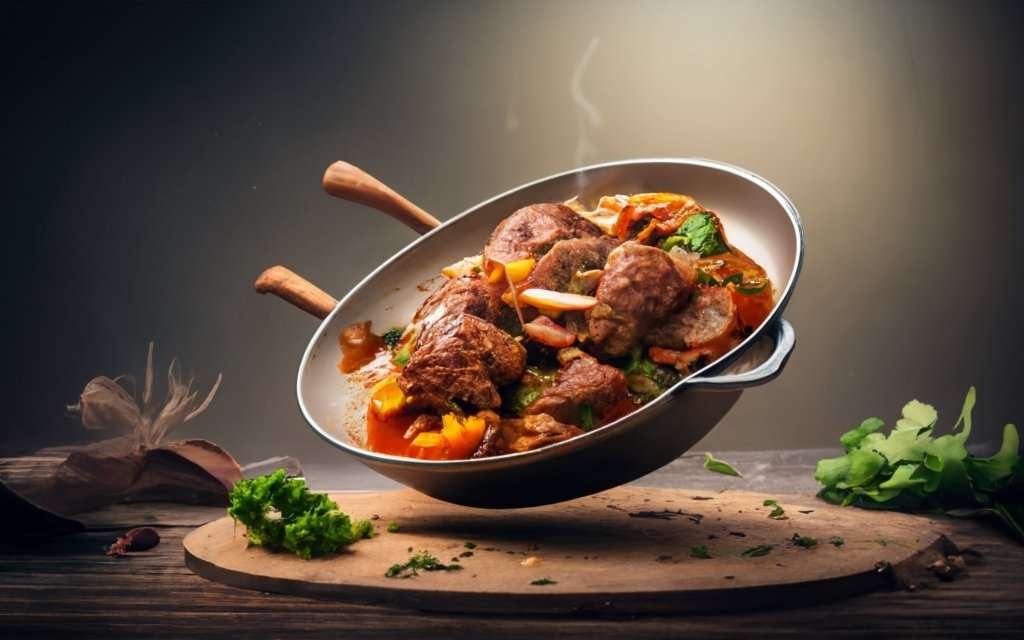Understanding Adobo and Its Nutritional Content
Welcome to the flavorful world of adobo! If you’ve ever wondered about the deliciousness that is adobo or how it fits into your diet, you’re in the right place. In this article, we’re going to uncover the secrets of this beloved dish and delve into the world of calories in adobo.
What is Adobo?
Adobo is not just a dish; it’s a culinary treasure. It’s a versatile and iconic dish with roots in various cuisines worldwide. At its core, adobo typically consists of meat or vegetables marinated and simmered in a delicious blend of vinegar, soy sauce, and spices. Its tangy and savory flavors make it a favorite in Filipino, Mexican, and Spanish kitchens, among others.

The Ingredients of Adobo
To create the magic of adobo, you need the right ingredients. Here are the key players that come together to form this culinary masterpiece:
- Meat or Vegetables: Typically, adobo features chicken, pork, beef, or a combination of these meats. However, vegetarians can enjoy variations with tofu or vegetables.
- Vinegar: This provides the distinctive tangy flavor and acts as a preservative.
- Soy Sauce: Adds a salty and savory note to the dish.
- Garlic: The aroma and flavor enhancer that’s almost always present.
- Bay Leaves: For a subtle, earthy undertone.
- Peppercorns: Adding a hint of spice.
- Other Spices: Depending on the recipe and regional variations, adobo can include spices like oregano, paprika, or chili.
Nutritional Profile of Adobo
Now, let’s dive into the nutritional aspects of adobo, including calories in adobo and other vital information:
- Calories: The calorie content of adobo varies depending on the type of meat or vegetables used and the cooking method. It generally ranges from 150 to 300 calories per serving.
- Macronutrients: Adobo is a balanced source of macronutrients. It contains protein from the meat or plant-based ingredients, carbohydrates from the sauce and vegetables, and fats, especially if it’s made with fatty cuts of meat.
- Micronutrients: Adobo also provides essential vitamins and minerals, such as B vitamins from the meat and garlic, as well as iron and potassium.
Wondering how these numbers translate to your plate? Keep reading to find out how to calculate the calories in adobo for your specific recipe.
Read More: Unlocking the Power of Lean Meat Adobo: Nutrition Benefits and Expert Insights
How to Calculate Calories in Adobo
Calculating the calorie content of your adobo is straightforward. Follow these steps:
- Ingredient Weighing: Measure the weight of each ingredient used in your recipe, including the meat or vegetables, vinegar, soy sauce, and any additional spices.
- Calorie Lookup: Look up the calorie values for each ingredient. You can find these values on food labels or online databases.
- Math Time: Multiply the weight of each ingredient by its calorie value and add everything together. This will give you the total calorie count for your adobo.
Remember, the exact calories in adobo can vary depending on your specific recipe, so it’s a good idea to calculate it based on your ingredients.
Popular Variations of Adobo
Adobo’s adaptability shines through in its various regional and cultural variations. Here are some popular ones:
- Filipino Adobo: The classic version with chicken or pork, often served with rice.
- Mexican Adobo: Known for its rich and spicy tomato-based sauce.
- Spanish Adobo: A flavorful marinade used for meats, especially in Spanish and Latin American cuisines.
- Vegetarian Adobo: Tofu, mushrooms, or various vegetables take center stage, making it a favorite among vegetarians.
Analyzing Calories in Different Adobo Recipes
Introduction to Caloric Variability
When it comes to calories in adobo, there’s more than meets the taste buds. Adobo recipes can vary significantly, and understanding these calorie differences is crucial. Let’s explore the diverse world of adobo and uncover how its calorie content can fluctuate.
Calories in Chicken Adobo
- Chicken adobo is a beloved classic. Its calorie count per serving typically ranges from 200 to 300 calories.
- The exact calorie content depends on factors such as the type of chicken (skinless vs. skin-on) and the amount of sauce used.
Calories in Pork Adobo
- Pork adobo offers a richer flavor profile. A serving usually contains 250 to 350 calories.
- The use of fatty cuts of pork or larger portions can contribute to higher calorie counts.
Calories in Beef Adobo
- Beef adobo is a hearty choice. A single serving typically packs around 300 to 400 calories.
- The calorie count may vary based on the cut of beef and how long it’s simmered.
Read More: Is Chicken Adobo Healthy? Exploring the Nutritional Benefits
Calories in Vegetable Adobo
- Vegetarian or vegan? No problem! Vegetable adobo offers a satisfying alternative with fewer calories.
- A typical serving contains around 150 to 250 calories, depending on the vegetables and cooking method.
Factors Affecting Calorie Count
Several factors can influence the calorie count in your adobo:
- Cooking Method: Grilling or baking the meat before simmering it in the sauce can reduce the overall calorie content compared to frying.
- Portion Size: Larger servings naturally contain more calories. Be mindful of your portion to manage calorie intake.
- Sauce Thickness: The consistency of the adobo sauce matters. Thicker sauces tend to have slightly higher calorie counts.
FAQs about Calories in Adobo
Let’s address some of the most common questions related to the calories in adobo, based on the “People Also Ask” section in Google search results:
- How many calories are in a typical serving of adobo?
- A typical serving of adobo can range from 150 to 400 calories, depending on the meat and portion size.
- Can adobo be part of a low-calorie diet?
- Yes, adobo can be part of a low-calorie diet if you choose lean meats and control portion sizes.
- Are there healthier alternatives to traditional adobo?
- Absolutely! You can make adobo healthier by using lean meats or tofu and reducing the amount of oil used.
- How does marinating time affect calorie content?
- Marinating time doesn’t significantly impact calorie content, but it enhances flavor.
In this exploration of calories in adobo, we’ve uncovered the calorie ranges for various adobo recipes, from chicken and pork to beef and vegetarian versions. We’ve also highlighted the factors that can sway the calorie count in your favorite adobo dish. Whether you’re counting calories or simply savoring the flavors, understanding these variations can help you enjoy adobo in a way that aligns with your dietary preferences. So, go ahead, indulge in the world of adobo, and make informed choices to suit your taste and nutritional goals.


